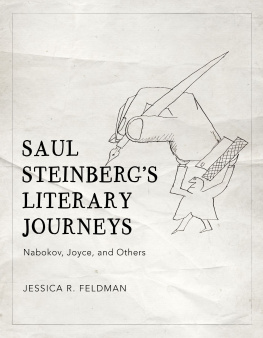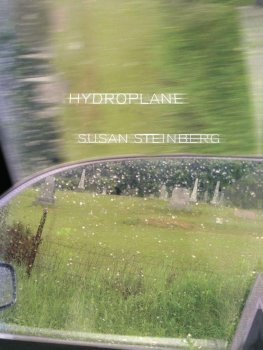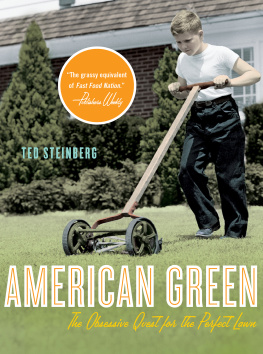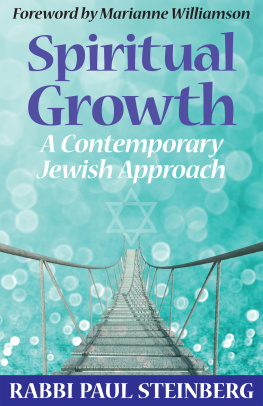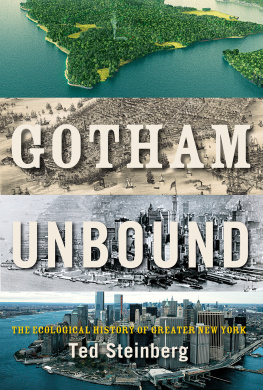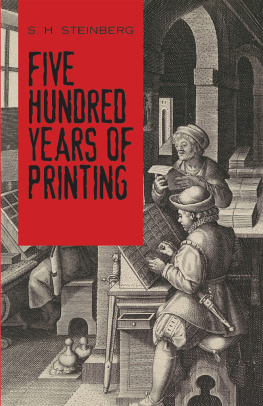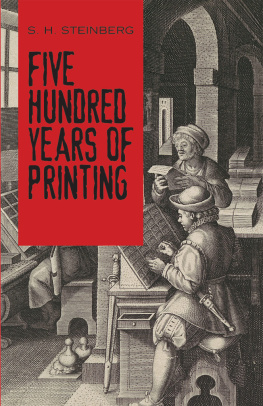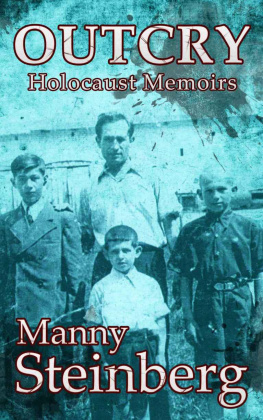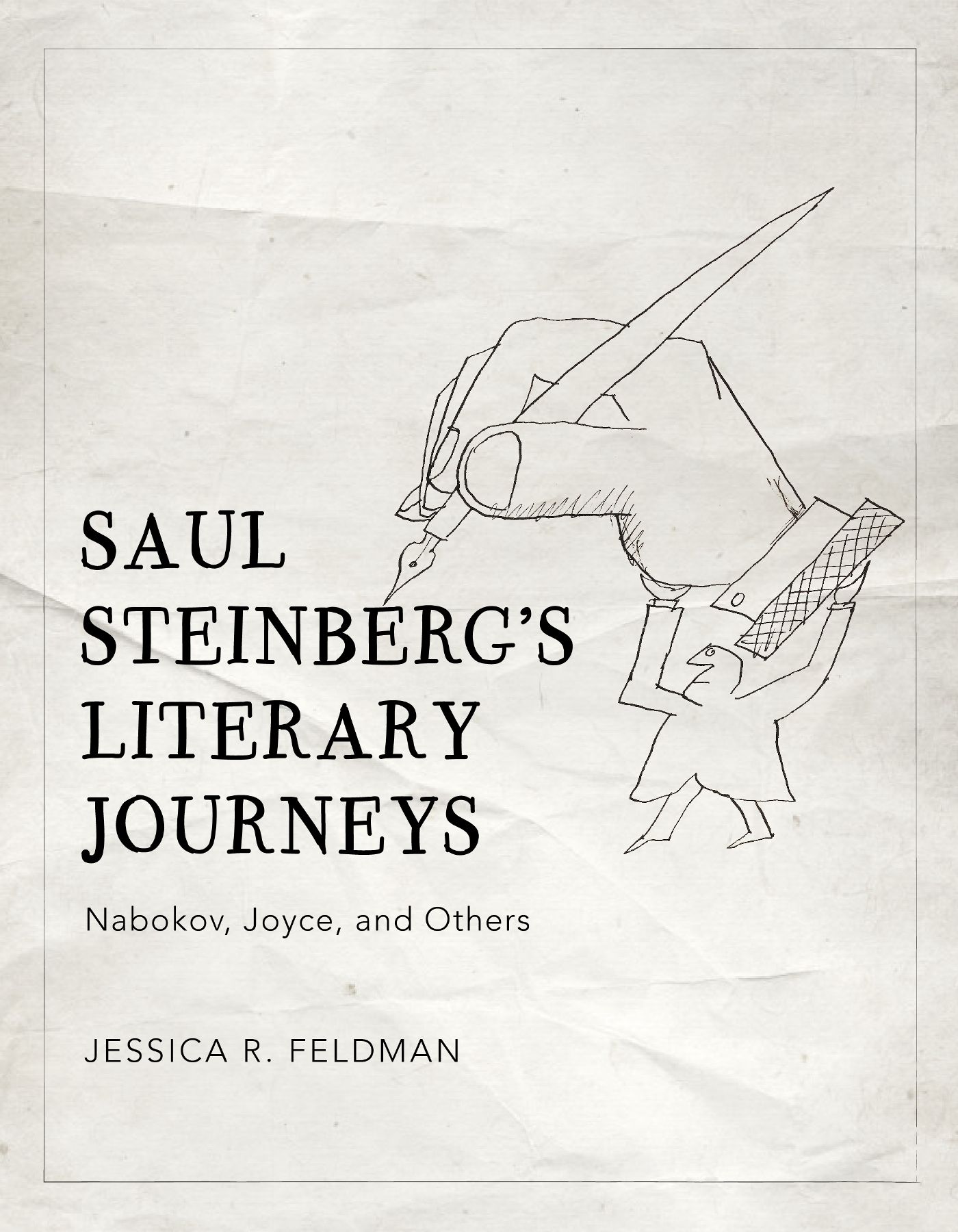
SAUL STEINBERGS LITERARY JOURNEYS
Saul Steinbergs Literary Journeys
Nabokov, Joyce, and Others
JESSICA R. FELDMAN
University of Virginia Press
Charlottesville and London
University of Virginia Press
2021 by the Rector and Visitors of the University of Virginia
All rights reserved
Printed in the United States of America on acid-free paper
First published 2021
9 8 7 6 5 4 3 2 1
Library of Congress Cataloging-in-Publication Data
Names: Feldman, Jessica R. (Jessica Rosalind), author.
Title: Saul Steinbergs literary journeys : Nabokov, Joyce, and others / Jessica R. Feldman.
Description: Charlottesville : University of Virginia Press, 2021. | Includes bibliographical references and index.
Identifiers: LCCN 2020028771 (print) | LCCN 2020028772 (ebook) | ISBN 9780813945118 (hardcover ; acid-free paper) | ISBN 9780813945125 (epub)
Subjects: LCSH: Steinberg, SaulCriticism and interpretation. | Nabokov, Vladimir Vladimirovich, 18991977Influence. | Joyce, James, 18821941Influence. | Art and literatureHistory20th century.
Classification: LCC NC1429.S588 F45 2021 (print) | LCC NC1429.S588 (ebook) | DDC 700.9/04dc23
LC record available at https://lccn.loc.gov/2020028771
LC ebook record available at https://lccn.loc.gov/2020028772
Cover art: Untitled, Saul Steinberg, c. 194954, ink on paper, 7 10 in. (Beinecke Rare Book and Manuscript Library, Yale University; The Saul Steinberg Foundation/Artists Rights Society, New York); background daboost/iStock
For George
CONTENTS
Sheila Schwartz, Research & Archives Director at the Saul Steinberg Foundation, provided excellent support for this project. I thank the staff at Alderman Library, University of Virginia, and the Beinecke Rare Book and Manuscript Library, Yale University, especially Eve Neiger and Anne Marie Menta. The Pace Gallery and Aram Jibilian, Director of Photography Archives at Pace, supplied important images. For help of exactly the kind I needed, I thank Paul Barolsky, Mary McKinley, Farzaneh Milani, Christina Ball, Michael Rutherglen, Susannah Rutherglen, Claire A. Nivola, Christine Taylor, David Berson, Tim Morton, Julia Stone, Lucy Stylianopoulos, Steve Arata, and John OBrien. All errors are my own.
All Saul Steinberg images The Saul Steinberg Foundation/Artists Rights Society (ARS), New York.
Figure 43 courtesy of Cornell University, PJ Mode Collection of Persuasive Cartography.
Charles Baudelaire, excerpts from Correspondences and Crowds from Flowers of Evil and Paris Spleen, translated by William H. Crosby. Translation 1991 by William H. Crosby. Reprinted with the permission of The Permissions Company, LLC on behalf of BOA Editions, Ltd., boaeditions.org.
Elizabeth Bishop, excerpt from The Map from The Complete Poems, 19271979. Reprinted with permission from Farrar Straus Giroux. 1983 by Alice Helen Methfessel. All rights reserved.
Vladimir Nabokov, North America on Antiterra, from Ada oder Das Verlangen. Reprinted with the permission of Rowohlt Verlag GmbH, copyright 1974. All rights reserved.
Arthur Rimbaud, excerpts from Memory from Rimbaud: Complete Works, Selected Letters, translated by Wallace Fowlie. 1966, University of Chicago Press. All rights reserved.
Saul Steinberg
LAB Lettere a Aldo Buzzi; English translation, Letters to Aldo Buzzi, typescript at Saul Steinberg Foundation
NY New Yorker magazine
RS Saul Steinberg, with Aldo Buzzi, Reflections and Shadows
SS: I Joel Smith, Saul Steinberg: Illuminations
SSF The Saul Steinberg Foundation
YCAL Saul Steinberg Papers, Yale Collection of American Literature, Beinecke Rare Book and Manuscript Library, mss. 1053; with box number (b.) and file number (f.)
Note: In referring to works by Saul Steinberg that are not reproduced in this book, those bequeathed by the artist to the Saul Steinberg Foundation are cited as SSF followed by five digits, e.g., SSF 00222. Those bequeathed to the Beinecke Rare Book and Manuscript Library, Yale University, are cited as YCAL inv. no. followed by four digits, e.g., YCAL inv. no. 0222.
Vladimir Nabokov
Ada Ada, or Ardor: A Family Chronicle
AnL The Annotated Lolita
LL Lectures on Literature
PF Pale Fire
RLSK The Real Life of Sebastian Knight
SM Speak, Memory: An Autobiography Revisited
SO Strong Opinions
James Joyce
P A Portrait of the Artist as a Young Man
U Ulysses
Introduction
Thought Images
Steinberg Praises Joyce and Nabokov
Saul Steinbergs mingling of the visual and the verbal, based on his fascination withand reworking ofthe fiction of Vladimir Nabokov and James Joyce, indicates that modernism developed in part through a bold exploration of inter-art energies. Steinberg deserves an honored place both in the vanguard of mid-twentieth-century artists and in our understanding of modernism. In order to give him his due, its necessary to explore further the notion that he regarded his drawing as a form of writinga statement that, as well see, both he and his astute admirers often make. It is time to explore with specificity what Steinbergs understanding of himself as a writer meant to his actual making of art, image by image.
Luckily, Steinberg gave us an important clue. In 1977 Grace Glueck, for ARTnews, asked some one hundred artists, heavily weighted on the American side, to answer this question: What specific work(s) of artor artist(s)of the past 75 years have you admired or been influenced byand why? Saul Steinberg carefully wrote out his reply: The artist is an educator of artists of the futureof artists who are able to understand and in the process of understanding perform unexpectedthe bestevolutions. In this sense James Joyce and Vladimir Nabokov are our great teachers. He goes on to name and praise three visual artists: Pablo Picasso, Walker Evans, and Andy Warhol. This was an unusual response to the survey: Pablo Picasso, Henri Matisse, Jackson Pollock, and Constantin Brncui dominated, in that order, and only a few of the artists polled mentioned writers.
By naming Joyce and Nabokov, Steinberg announces his literary culture. Visual artists are not necessarily fervent readers, much less readers of difficult texts. He also epitomizes with these two names a lifetime of intense readinghad the past 75 years limit not been placed on him, he would likely have listed Leo Tolstoy, Nikolai Gogol, Gustave Flaubert, and Charles Baudelaire among his personal greats.
Not only did Steinberg have a literary bent, but he also thought of himself as a writer. Drawing is like writing, he explained. Or, you do it instead of writing. Drawing is actually the necessity to explain something. In a writers drawing, a line is a line. Like a written word is seen letter by letter and then it is translated. I draw to explain things to myself. Let us then consider the works of his two great teachers, Nabokov and Joyce, in relation to Steinbergs own oeuvre.
We dont yet have a comprehensive examination of Steinbergs place in the history of art, nor will this study provide one. Saul Steinberg joins this analytic tradition, himself writing and speaking about the relation of writing and drawing. But it is through his visual oeuvrehis drawings, paintings, prints, sculptures, and assemblagesthat he most eloquently makes the case for the inseparability of his own visual and verbal artistry.
Next page
